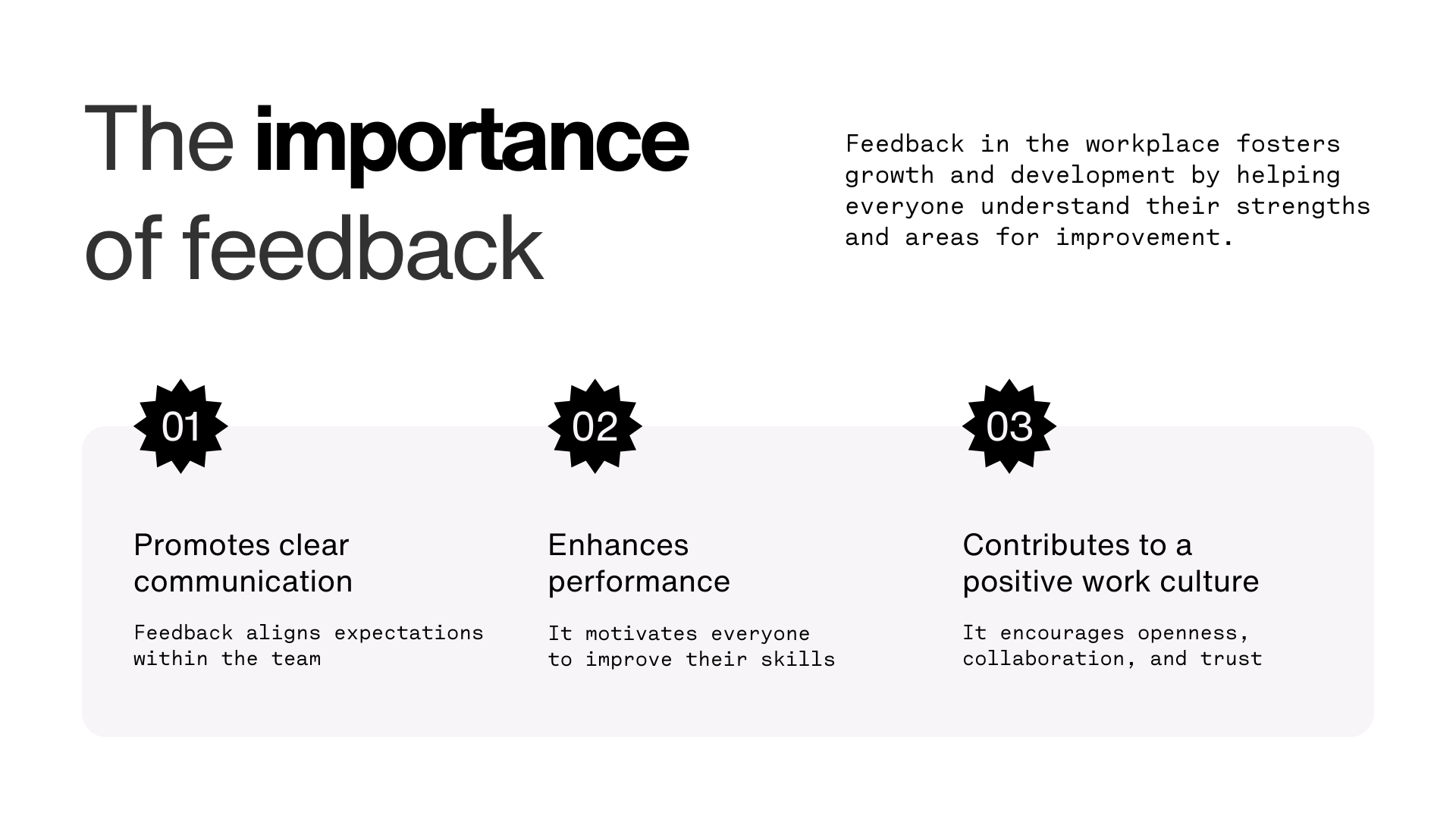
Why Feedback Matters in Testing?
In a Testing and Test Automation team, clear communication is key. Whether it’s reviewing a test case, debugging automation scripts, or improving collaboration, constructive feedback helps everyone grow and work more efficiently.
But let’s be real—giving feedback can be tricky. Too vague, and it’s unhelpful. Too harsh, and it discourages. That’s where the SBID framework (Situation, Behavior, Impact, Desired Outcome) comes in. It provides a simple way to give feedback that’s clear, actionable, and solution-oriented.

Let’s break it down and see how it works with real-life testing team scenarios.
What is the SBID Framework?
The SBID framework helps structure feedback in four steps:
- S (Situation): Describe when and where something happened.
- B (Behavior): Explain the specific action observed.
- I (Impact): Highlight the effect on the team, project, or process.
- D (Desired Outcome): Suggest improvements or solutions.
Using SBID ensures feedback is specific, fair, and helps the person improve rather than feel criticized.
Why Use SBID in a Testing Team?
✅ Prevents miscommunication – Helps testers and developers understand exactly what went wrong and why.
✅ Encourages a learning culture – Turns mistakes into opportunities for growth.
✅ Improves test quality – Clear feedback leads to better scripts, cases, and reports.
✅ Reduces conflicts – Focuses on facts, not personal opinions.
SBID Framework in Action: Real Testing Team Examples
Example 1: Reviewing a Flaky Test Case
Feedback:
- S (Situation): During yesterday’s test run, the login automation script failed intermittently.
- B (Behavior): The script used absolute XPaths, which caused instability when the UI changed.
- I (Impact): This led to unreliable test results and extra debugging time.
- D (Desired Outcome): Could you update the locators to use relative XPaths or CSS selectors to make the script more robust?
Why this works: Instead of just saying, “Your script is flaky,” this feedback explains why the issue happened and suggests a fix.
Example 2: Improving Test Case Documentation
Feedback:
- S (Situation): During the last sprint review, the manual testers struggled to execute automation test cases.
- B (Behavior): Some test case descriptions were missing details on expected results.
- I (Impact): This caused confusion and delayed test execution.
- D (Desired Outcome): Could we add more details in the test case descriptions so manual testers can understand them better?
Why this works: Instead of saying, “Your documentation is unclear,” this feedback pinpoints what’s missing and offers a practical solution.
Example 3: Addressing Slow Bug Reporting
Feedback:
- S (Situation): During the last regression cycle, a critical bug was reported late.
- B (Behavior): The bug was discovered early but wasn’t logged in Jira until two days later.
- I (Impact): This delayed the fix, affecting the release timeline.
- D (Desired Outcome): Going forward, could we log bugs immediately and mark them as blockers if they are critical?
Why this works: Instead of saying, “You took too long to report the bug,” this feedback clarifies the impact and sets a clear improvement goal.
Best Practices for Using SBID in a Testing Team
🔹 Balance positive and constructive feedback – Use SBID to recognize good work too!
🔹 Keep it timely – Give feedback soon after the event while it’s still fresh.
🔹 Encourage a discussion – Ask for the other person’s perspective and make it a two-way conversation.
🔹 Adapt to personalities – Some testers prefer direct feedback, while others need a more diplomatic approach.
Common Mistakes to Avoid
🚫 Being too vague – “You need to write better test cases” isn’t helpful. Instead, be specific.
🚫 Focusing on personality – “You’re careless” is an opinion, not feedback. Stick to behaviors.
🚫 Overloading feedback – Address one issue at a time instead of listing multiple points.
🚫 Forgetting the Desired Outcome – Feedback should always lead to an improvement plan.
Conclusion: Make SBID a Habit in Your Testing Team
The SBID framework makes feedback clear, constructive, and actionable. Whether you’re reviewing test scripts, logging bugs, or improving teamwork, structured feedback leads to better testing processes and stronger collaboration.
Next Steps:
✅ Try SBID in your next feedback session.
✅ Practice with small feedback moments daily.
✅ Share SBID with your team to create a feedback-friendly culture.
By using SBID, your testing and automation processes will become more efficient, and your team will grow stronger. Give it a shot and see the difference!
How does your team handle feedback? Share your thoughts in the comments!
Bonus Video:
![]()
Subscribe to QABash Weekly 💥
Dominate – Stay Ahead of 99% Testers!





